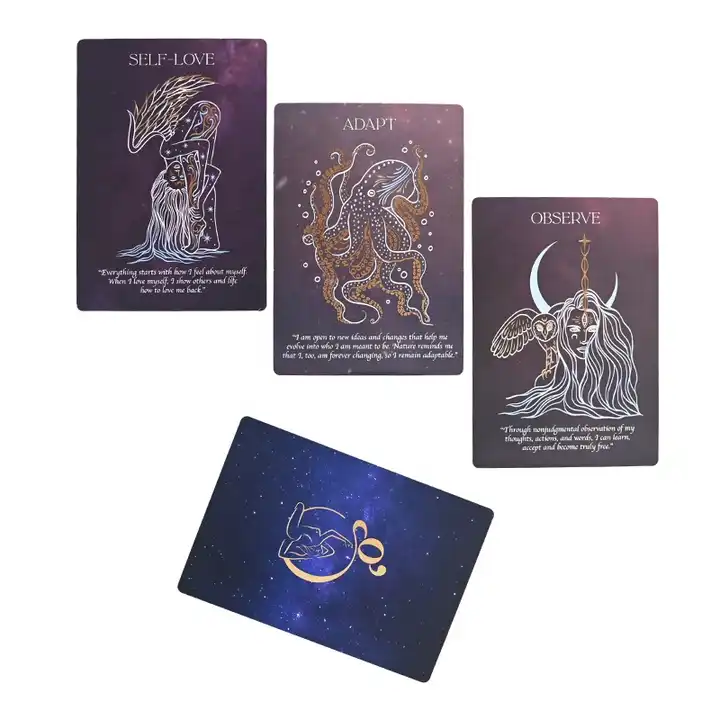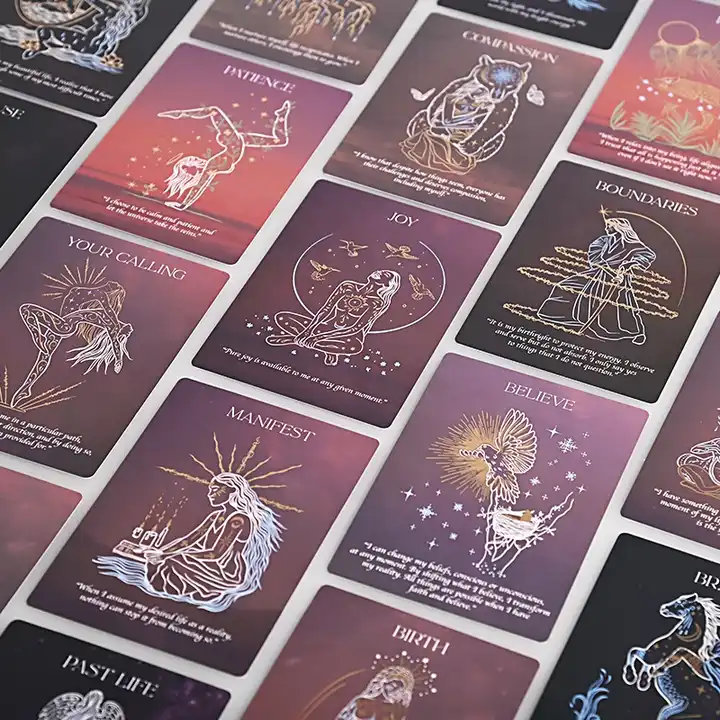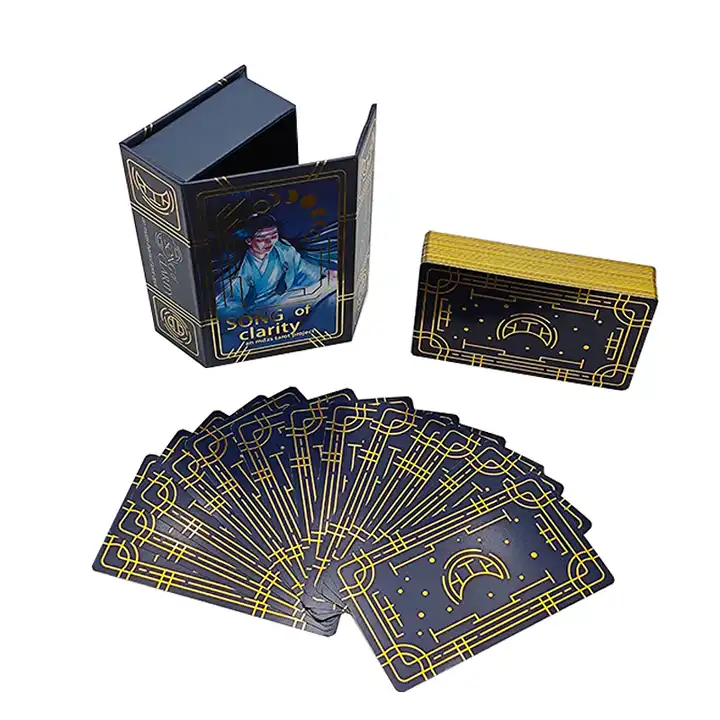Content Menu
● History of Tarot Cards: From Parlor Games to Mystical Tools
● Key Historical Milestones
● Symbolism and Archetypes: Decoding the Cards
● Major Arcana: The Soul’s Journey
● Minor Arcana: Daily Life and Challenges
● Modern Applications: Therapy, Pop Culture, and Digital Tarot
● Tarot in Mental Health
● Tarot in Pop Culture
● Digital Tarot Apps
● Scientific Perspectives: Placebo or Profound Tool?
● How to Use Tarot for Personal Growth
● Step 1: Daily One-Card Pulls
● Step 2: Shadow Work with the Devil Card
● Step 3: Create Vision Boards with the Star Card
● Tarot and Astrology: Cosmic Connections
● How to Integrate Astrology into Tarot Readings
● Tarot in Education: Teaching Critical Thinking and Creativity
● Benefits for Students
● Ethical Considerations: Avoiding Dependency
● Conclusion: Bridging the Mystical and the Mundane
● Frequently Asked Questions
>> 1.Can tarot readings predict the future?
>> 2.Are there "bad" tarot cards?
>> 3.How do I cleanse my tarot deck?
>> 4. Is tarot linked to religion?
>> 5. Can anyone learn to read tarot?
Tarot cards have captivated humanity for centuries, evolving from 15th-century Italian card games to modern tools for introspection and divination. With their intricate symbolism and mysterious allure, tarot decks spark debates: Are they a profound spiritual compass or just an entertaining pastime? This article delves into their history, cultural impact, psychological relevance, and practical applications to explore their true purpose.
History of Tarot Cards: From Parlor Games to Mystical Tools
The earliest tarot decks emerged in northern Italy during the 1430s as carte da trionfi (cards of triumph), used for games like tarocchi. These decks featured allegorical imagery reflecting Renaissance ideals, such as virtue, love, and fate. By the 18th century, occultists like Antoine Court de Gébelin linked tarot to ancient Egyptian mysticism, rebranding it as a divination tool. The 1909 Rider-Waite-Smith deck revolutionized tarot with its accessible symbolism, cementing its role in modern spirituality.

Key Historical Milestones
1781: French occultist Jean-Baptiste Alliette (Etteilla) published the first tarot guidebook, linking cards to astrology and numerology.
1910: The Rider-Waite-Smith deck popularized detailed illustrations, making tarot accessible to the masses.
1960s: The New Age movement embraced tarot as a tool for self-discovery, divorcing it from its occult reputation.
Symbolism and Archetypes: Decoding the Cards
Tarot’s power lies in its universal archetypes—symbols that tap into the collective unconscious, as defined by psychologist Carl Jung. Each card reflects timeless human experiences, offering a mirror for personal reflection.
Major Arcana: The Soul’s Journey
The 22 Major Arcana cards represent life’s spiritual milestones. For example:
The Lovers (VI): Symbolizes harmony and moral choices, often linked to relationships or ethical dilemmas.
Death (XIII): Signifies transformation, not literal death, urging acceptance of change.
Minor Arcana: Daily Life and Challenges
The 56 Minor Arcana cards address practical matters through four suits:
Wands: Creativity, ambition, and energy.
Cups: Emotions, relationships, and intuition.
Swords: Intellect, conflict, and decision-making.
Pentacles: Material stability, career, and health.
Modern Applications: Therapy, Pop Culture, and Digital Tarot
Tarot in Mental Health
Therapists increasingly use tarot as a reflective tool. By projecting emotions onto card imagery, clients articulate subconscious fears or desires. For example:
A Three of Swords (heartbreak) might help someone process grief.
The Eight of Cups (abandonment) could symbolize leaving a toxic job.
Tarot in Pop Culture
From music videos to fashion, tarot’s aesthetic permeates mainstream media:
Music: Lady Gaga’s Judas video features the Devil and Hanged Man cards.
Literature: Modern novels like The Night Circus use tarot motifs to enhance mysticism.
Digital Tarot Apps
Apps like Golden Thread Tarot and Labyrinthos offer AI-powered readings, democratizing access to tarot’s wisdom. However, critics argue they lack the tactile ritual of physical decks.

Scientific Perspectives: Placebo or Profound Tool?
Skeptics dismiss tarot as a placebo effect, where belief in the reading drives outcomes. Yet studies suggest that tarot’s value lies in its ability to:
Stimulate introspection: Cards act as Rorschach tests, revealing hidden thoughts.
Enhance decision-making: Framing problems through archetypes offers fresh perspectives.
A 2020 study in Psychology of Consciousness found that tarot users reported 34% higher self-awareness than non-users, highlighting its psychological benefits.
How to Use Tarot for Personal Growth
Step 1: Daily One-Card Pulls
Draw a card each morning and journal its message. For example, The Sun might encourage positivity.
Step 2: Shadow Work with the Devil Card
Explore self-sabotaging habits by reflecting on the Devil’s chains—what limitations are self-imposed?
Step 3: Create Vision Boards with the Star Card
Use the Star’s hopeful imagery to manifest goals, combining tarot with visualization techniques.
Tarot and Astrology: Cosmic Connections
Tarot cards often incorporate astrological symbols, linking each card to planetary influences. For instance:
The Moon is associated with intuition and illusion, reflecting its astrological role in emotional cycles.
The Emperor is linked to Aries, symbolizing leadership and authority.
How to Integrate Astrology into Tarot Readings
Use planetary positions: Consider the current zodiac positions when interpreting cards.
Match cards to signs: Align Major Arcana cards with zodiac signs for deeper insights.
Tarot in Education: Teaching Critical Thinking and Creativity
Tarot can be a unique educational tool, fostering critical thinking and creativity in students. By using tarot as a storytelling device, educators can encourage students to explore complex themes and moral dilemmas. For example, a lesson on ethics might involve interpreting The Lovers card to discuss moral choices.

Benefits for Students
Enhanced creativity: Tarot’s symbolic language encourages imaginative storytelling.
Improved critical thinking: Students learn to analyze complex themes through card interpretations.
Ethical Considerations: Avoiding Dependency
While tarot empowers, over-reliance can hinder personal agency. Ethical readers emphasize:
Empowerment, not fatalism: Readings should inspire action, not resignation.
Confidentiality: Respecting querents’ privacy builds trust.
Conclusion: Bridging the Mystical and the Mundane
Tarot transcends entertainment by fostering self-awareness and resilience. Whether used for spiritual growth or creative inspiration, its enduring appeal lies in its ability to weave ancient wisdom into modern life.
Frequently Asked Questions
1.Can tarot readings predict the future?
No—tarot offers guidance based on current energies, emphasizing free will over fixed destiny.
2.Are there "bad" tarot cards?
Cards like the Tower or Ten of Swords symbolize challenges, but they encourage growth, not doom.
3.How do I cleanse my tarot deck?
Use moonlight, sage smoke, or intention-setting to clear residual energies.
4. Is tarot linked to religion?
While some associate it with occult practices, tarot is a secular tool adaptable to any belief system.
5. Can anyone learn to read tarot?
Yes! Practice, intuition, and study of symbolism are key—no innate “gift” required.
































